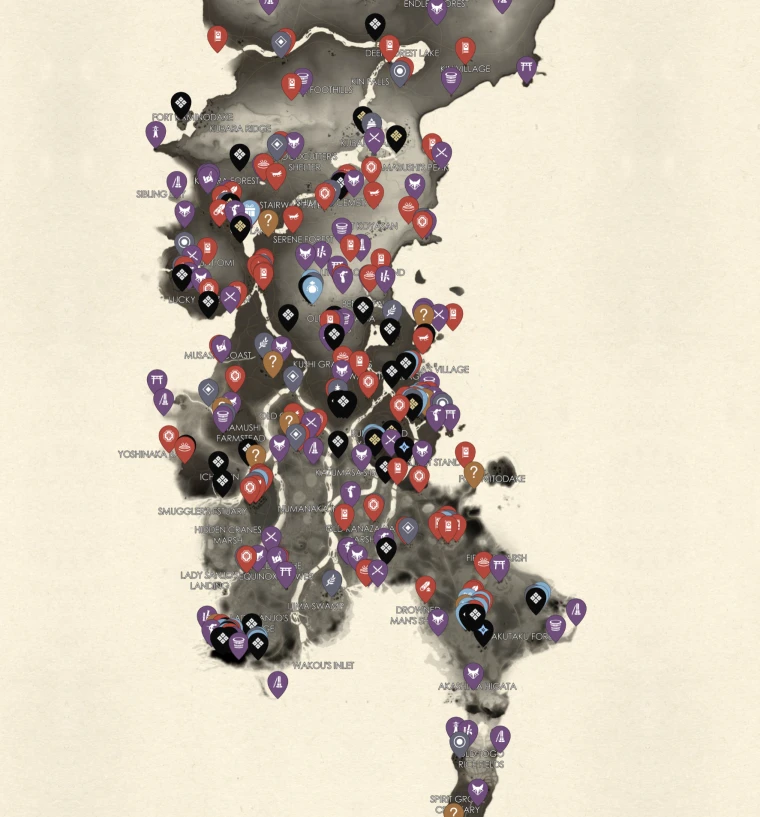Ghost of Tsushima opens up a truly large in-game world for players, with a ton of additional activities and events. The game's map is divided into three major regions, each based on the real-life Japanese island of Tsushima. Each of the three areas - Izuhara, Toyotama, and Kamiagata - offers its own types of environments, as well as a number of new dangers. Enemies become more inventive, but you also have more new tools at your disposal. Here's a full map of Ghost of Tsushima: Director's Cut, with important features of the regions described.
The information below will be useful in terms of detailed study of the open world of Ghost of Tsushima: Director's Cut. Here you will find a display of the full map of the game, including all important interesting markers and additional activities. Having familiarized yourself with the map, you will definitely not miss anything during your passage of the game.

Izuhara is the first area you explore in Ghost of Tsushima. It is the largest and most populated area on the entire map, full of villages and settlements. It also has the most hot springs and shrines, which can be opened to increase various character attributes. Since you will be exploring this area early in the story, you will encounter mainly bandits as enemies, with the Mongol hordes increasing in number after you leave. It is a temperate forested area with a lot of different terrain and elevations to explore.

Toyotama is perhaps the most diverse part of the Ghost of Tsushima map. It’s flatter and wetter, with plenty of low-lying farmland and water. It’s still a fairly busy part of the map, with only slightly fewer villages and bases than Izuhara. However, given that you’re discovering this area as part of an escalating war with the Mongol invaders, there are more enemies to deal with, as well as camps and captured locations to liberate.

The third and final area you unlock, Kamiagata, is a bare, icy place. There are still villages, shrines, and bases to discover, as well as enemy camps, but there are far fewer of them than in the previous two areas. It's largely a staging area for the game's final, climactic act. The combination of story and setting makes it feel somewhat empty, although there are still areas to discover and camps to attack. While ice and snow are its defining characteristic, the terrain is almost a mix of the previous two areas, with mountains breaking up the otherwise flat plains.

Above is a full map of Iki Island in Ghost of Tsushima: Director's Cut. Here you'll find the exact locations of temples, archery stands, and more.